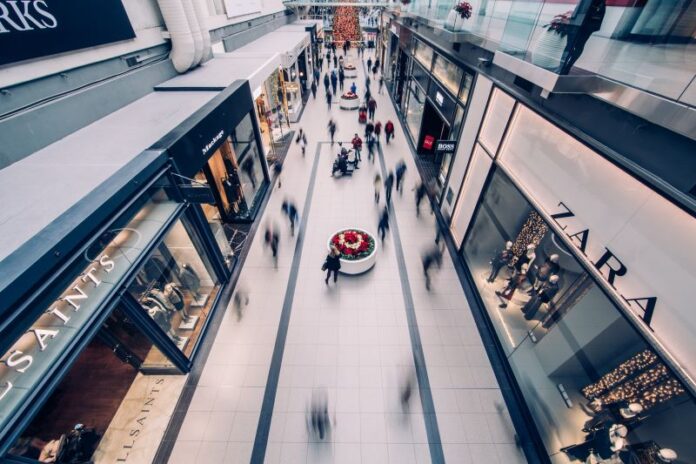In this article, Ivana Maksimović, Head of Property Management Services at CBRE South-Eastern Europe, answers important questions about the future of retail in the region.
Will we ever return to the old shopping habits? Will leisure and entertainment still remain important aspects of a shopping destination? Are we witnessing the big comeback of street retail? What are the new ways of keeping the customers engaged?
Even before the pandemic, the retail industry in Serbia has been approaching a mature phase, reaching a total of 1 million square meters of modern leasable retail space.
Although slightly affected, the opening of two major shopping centers in Belgrade, BEO Shopping Center and GALERIJA BELGRADE, was not interrupted.
The interest of customers to explore and experience new shopping destinations is still on the rise.
Our local, shopping habits are predominantly “traditional” but with the growing threat of the pandemic, there is an increasing demand for new ways of shopping engagement, modeled by more developed markets.
What is the future of retail and how do we move forward?
During the past several months, we have witnessed that managers of shopping centers across the South East Europe region were demonstrating extraordinary dedication to protect and keep customers safe. We have also seen exceptional cooperation between tenants and landlords to prioritize employee and customer wellbeing.
Although the pandemic has created disruption in the retail market, the demand for a physical shopping experience remains strong.
Customers continue to visit shopping centers, but their habits have started to change rapidly. This has put more pressure on shopping center landlords and retailers to keep pace with the evolving customer requirements, in order to remain competitive.
While thinking about what is the next normal for shopping centers and retail schemes, numerous issues have to be considered. However, all of them could be classified into three major categories: safety measures customers expect to see in place, retail channels that need to be used, and existing activities that should remain.
Health and Safety First
The customers are looking for visible safety measures, a clear and comprehensive set of instructions to follow, and an on-site staff who are confident and supportive. In the race to maintain footfall, shopping centers that quickly and easily implement safety measures and create an image of a safe environment will have an advantage.
We are witnessing that the previously most visited shopping centers are experiencing a decline in visits, while the overall visit and footfall in other retail destinations remain stable. The main reason behind this is that people are now opting for near-by shopping, rather than using public transportation to travel to their favorite shopping destinations.
Customers are also seeking spaces where contact can be carefully managed, and distance safely kept. Therefore, a number of shoppers are opting to do their shopping in retail parks and open-air centers.
Along with the increased number of people working from home, this could lead to the revitalization of local high streets and enhancement of neighborhood centers.
Introducing Shopping Innovations
Temporary closure of physical stores, at the beginning of the pandemic, with uncertainty for the future, forced retailers to adapt, more proactively, to the other channels of serving customers. Digital and omnichannel retailers navigated through this situation more easily, but retailers that prioritized physical stores were forced to properly respond in a short time.
The willingness of customers to revert to old ways of shopping is encouraging. Cashless stores or contactless sales are a quick response to customers physical safety demands. However, retailers can now use this opportunity to introduce innovative ways for customers to shop safely, which could at the same time strengthen their bond with the customers and further build brand loyalty.
Concierge service or one-to-one appointments providing a personalized experience, offer opportunities for brands to satisfy safety measures, but at the same time to elevate their relationships with their customers by making them more engaged.
Bringing the in-store experience to the digital and e-commerce world has led to the emerging of Livestream shopping and live commerce, which is becoming a fast-growing trend due to its social and interactive components. This is promising to become a next-generation shopping entertainment strategy. Live broadcasting on streaming platforms, with influencers showcasing products, trying them on, and sharing “unboxing experiences” with the wider group of consumers, is becoming highly popular among a younger generation of shoppers. This is further enhanced during the pandemic period, as the majority of people remain at home.
Hyper-Localization
Another rising trend in retail is hyper-localization, which refers to well-targeted personalization that spreads across all aspects of retail. A highly personalized service has always been a characteristic of smaller, local, independent retailers and now it can really make a difference for them.
New, small, personalized businesses may have the opportunity to open their own stores, giving high streets a new life and a variety of offers. Here lies the opportunity to enhance the role of the store staff from sales crew to brand experts and the role of shopping centers to go from shopping and leisure destinations to trendsetters.
Conclusion
People are looking forward to returning to “pre-pandemic activities”. Visiting shopping centers is one of the most looked forward activities, next to eating out, recreation or socializing with family and friends.
Before the retail business, as CBRE predicts, becomes “phygital” – where online and brick-and-mortar stores merge to serve the increasing demands of consumers for convenience, we will still have several years to shop, eat and socialize in a, hopefully safe, brick-and-mortar environment.
Emerging retail trends combined with the existing threat of COVID are putting pressure on retail property owners to rethink lease terms to address the issues related to closures or footfall drops. At the same time they also need to address properly online and physical sales for the future.
This will, for sure, require close collaboration and transparency among retailers, owners, and property managers. Consequently, radical changes in property valuations might happen, where new methods will need to be introduced to redefine traditional valuation metrics to include omnichannel sales, brand influence, customer interaction, data collection, footfall, or safety factors as new retail store metrics.
Challenges the pandemic has brought into the new retail era could be eventually overcome. The new opportunities it produced could re-create the retail environment, but it requires close cooperation of all retail industry stakeholders – tenants, landlords, property managers, and consumers.



